Kathrine Barbro Bendixen uses cow intestines to create sculptural lights
Discarded cow intestines are given a new life in the intricate lighting installations of Danish designer Kathrine Barbro Bendixen.
The Studio KBB founder cleans and reinflates the intestines, creating translucent tubes that naturally twist around an LED lighting fixture.
Her multi-layered compositions create unusual lighting effects and draw attention to the natural details of the organic material.
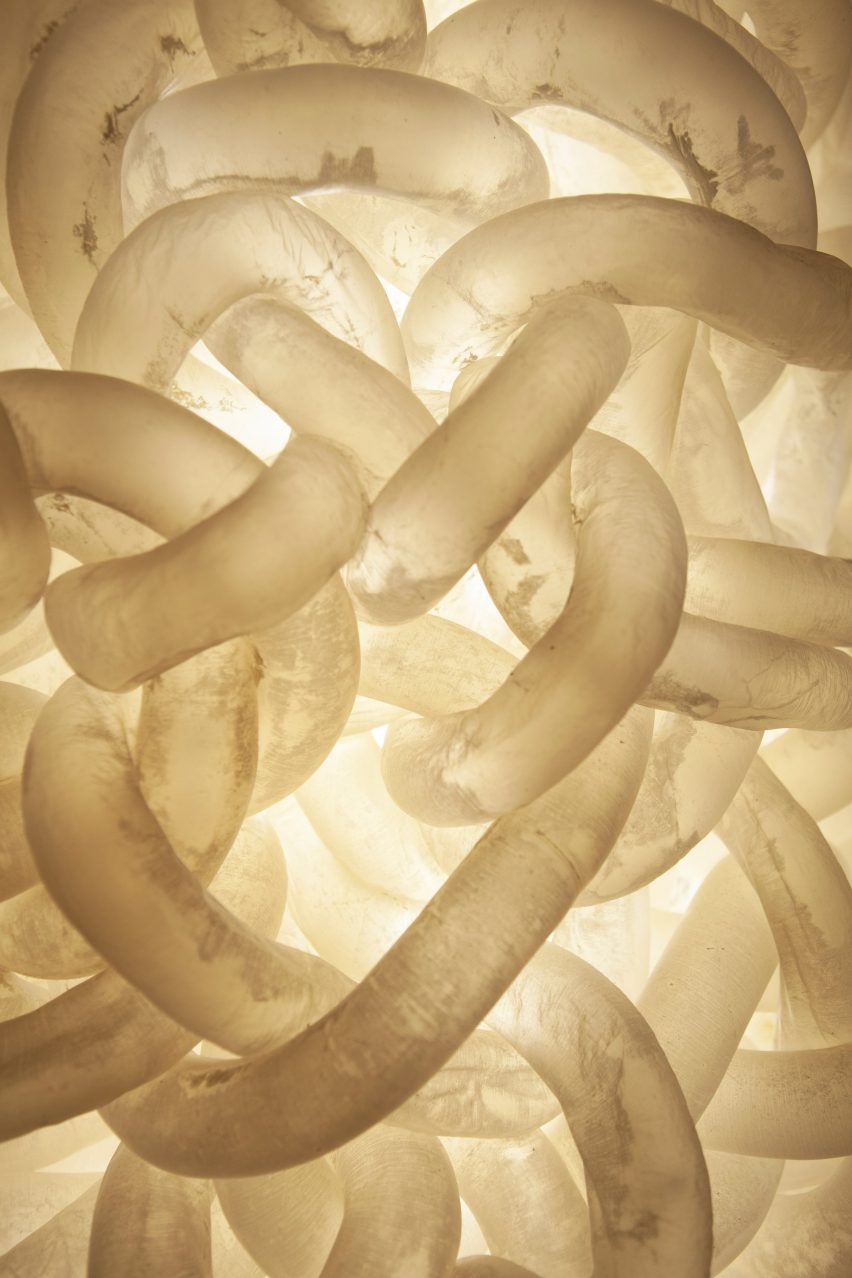
Copenhagen-based Barbro Bendixen first started experimenting with intestines while she was a student at Design Academy Eindhoven. After using pig intestines to make sausages for her family at Christmas, she started to think about other uses for the material.
"I was immediately fascinated," she told Dezeen. "It is a very surprising material, both aesthetically and functionally."
"When wet the intestine is very soft, indefinable and unmanageable. As soon as the water runs through you can see the proportions, elasticity and the purity of the intestines," she continued.

Through her research, the designer discovered that intestines are largely discarded as a waste product in the food industry. Even sausage manufacturers tend to opt for artificial casings.
However the natural product has a number of properties that offer potential in manufacturing. For instance, it is waterproof, but also breathable.
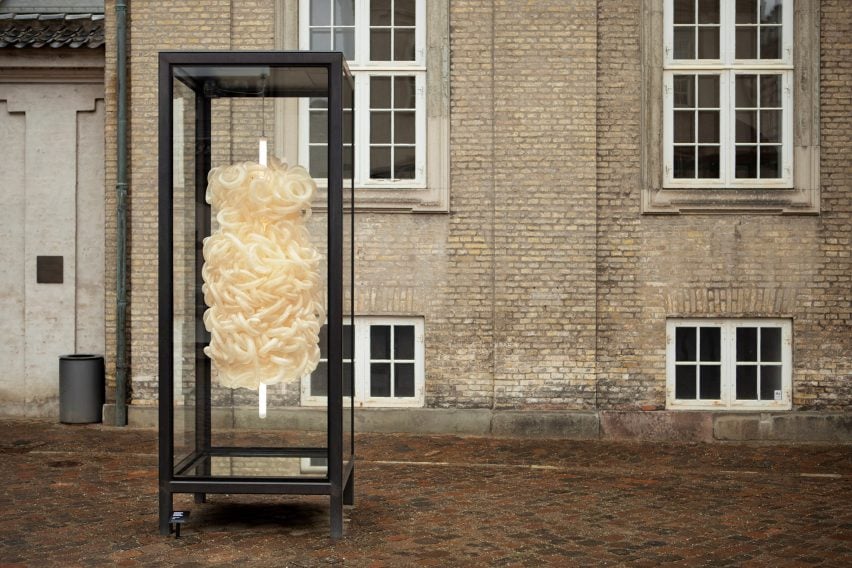
"The Inuit used the intestines of seals to make anoraks, because the outside of the material is waterproof, and the inside is breathable," explained Barbro Bendixen.
"The material GoreTex is also inspired by intestines."

The designer sources her intestines from a supplier in Denmark. They arrive clean, but she carries out a series of additional processes to ensure they are completely disinfected.
Once prepared, the intestines are blown up like balloons. They naturally curl, which Barbro Bendixen tries to embrace as she hangs them around a light source.
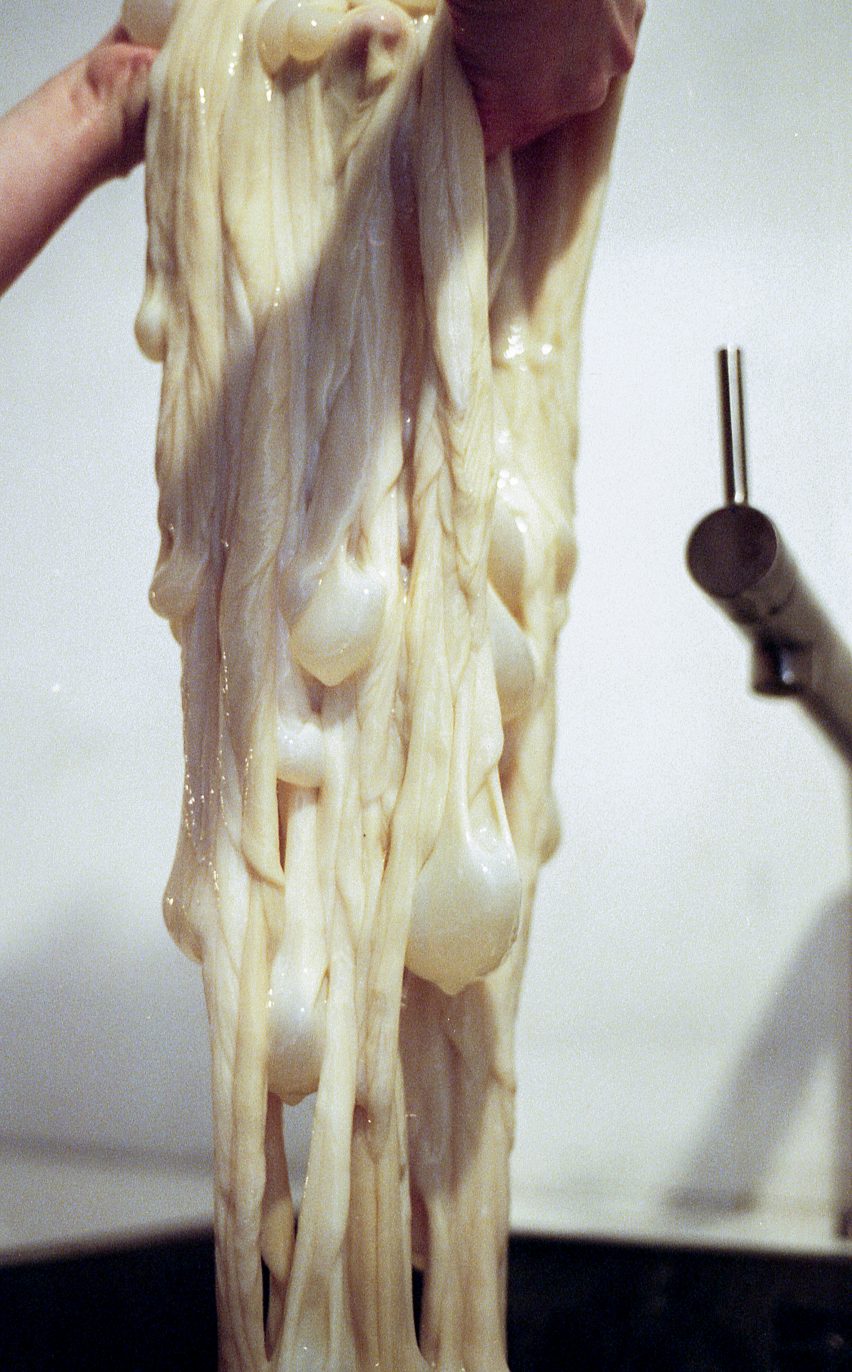
Initially the twisted tubes are soft and can be shaped, but after a few hours of drying they become more firm. They are left uncoated, allowing them to naturally "breathe".
"Because the material is organic and natural, and it is seldom used, I have had to learn by doing," explained the designer.

"I had to figure out how the intestines react and move under different circumstances. It has been, and still is, the most fun and frustrating process," she continued.
"When the intestines are blown up, they move, breathe, change with temperature, humidity and light, so they are incredibly difficult to figure out, but that is also their beauty."
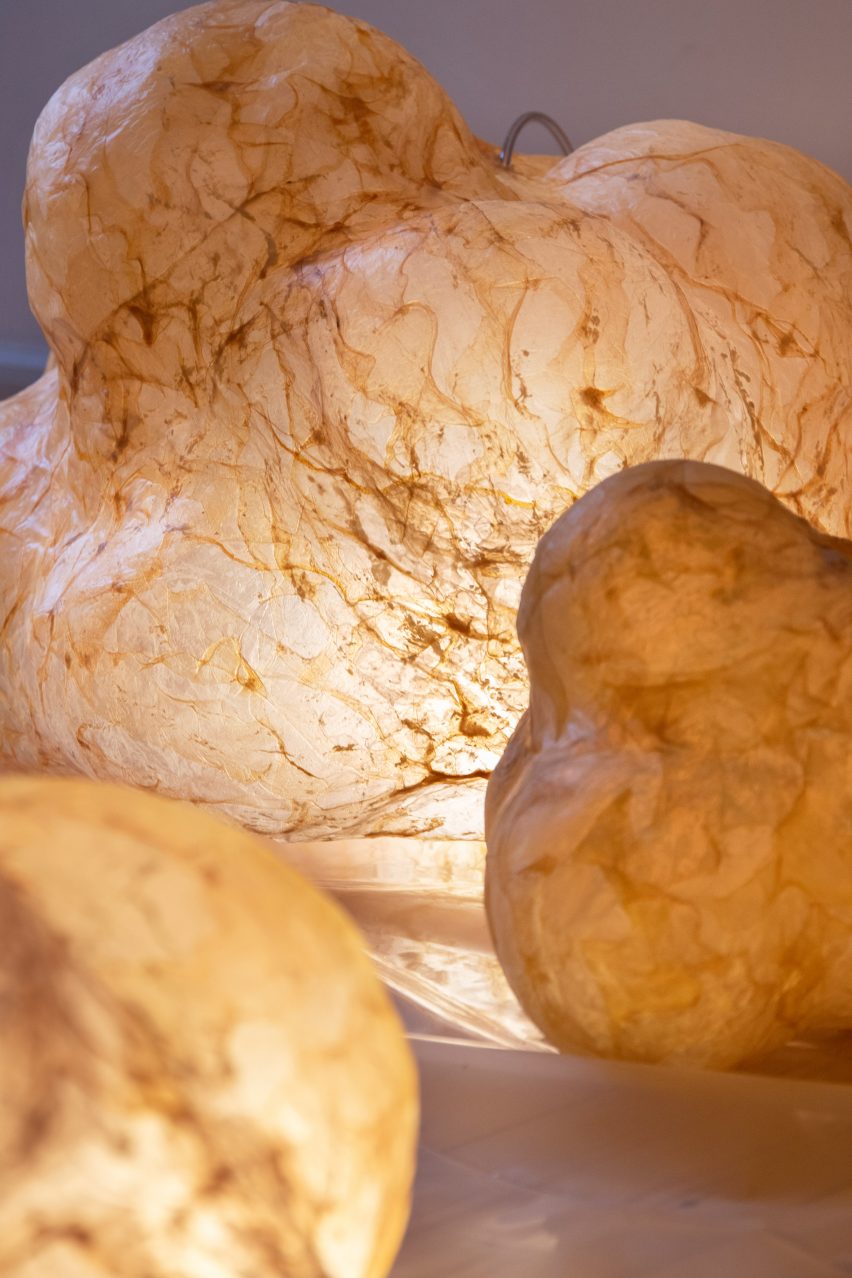
Barbro Bendixen presented her first intestine lights – a collection called Inside Out – at the Design Academy Eindhoven graduate show in 2016. She also created pieces for the Venice Art Biennale in 2017.
Her latest piece is on show in the exhibition Matters: Rethinking Materials, which opened at Designmuseum Danmark during art and design fair Chart last month and will remain in place until March 2020.
The work was created from the intestines of eight cows – approximately 200 metres worth.
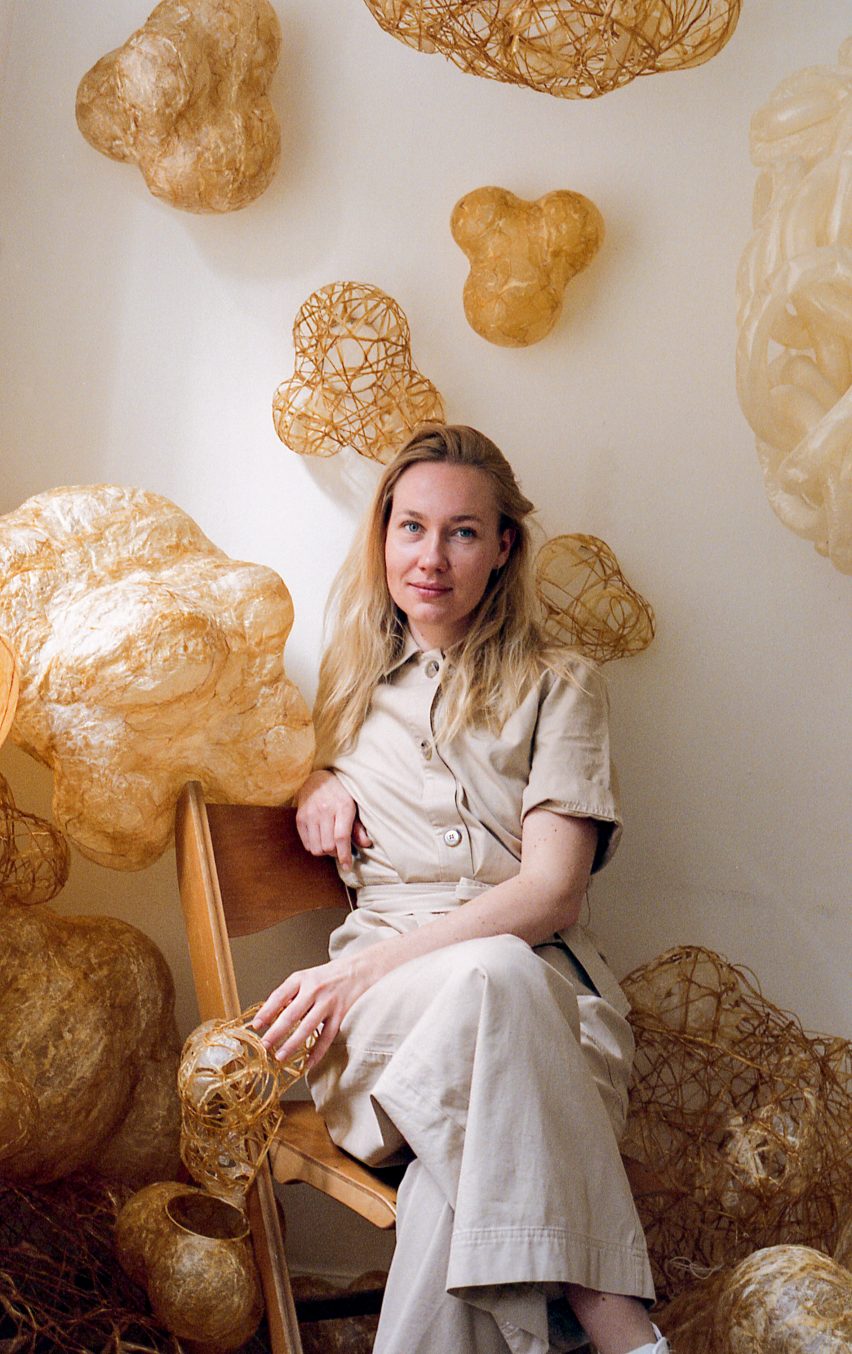
Her next project will see her transform intestines into a set of stools, for an exhibition she is creating with her grandfather, a 93-year-old cabinetmaker. But she admits that lighting is her favourite use of the material.
"You can see all the tiny details and the transparency that you would not notice otherwise," she said.
Barbro Bendixen is not the only designer experimenting with byproducts from the meat industry. Tobias Trübenbacher has been experimenting with pigs' bladders as well as intestines. Meanwhile Basse Stittgen made a series of objects using animal blood.